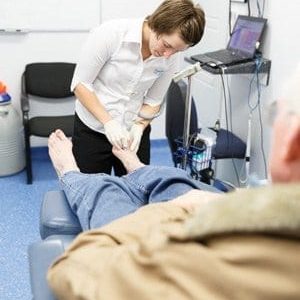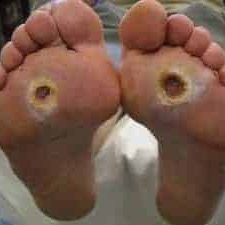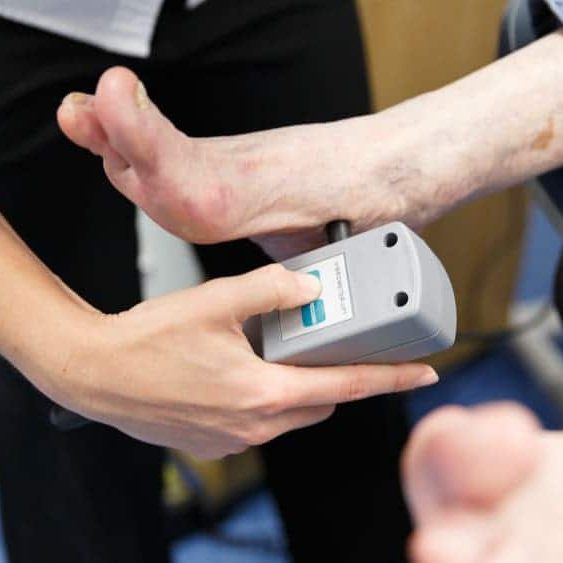Diabetes
Diabetes is a systemic metabolic disorder that impairs the body’s ability to absorb glucose from the blood stream and provide it to the tissue cells that require it for normal activity and health. The elevated blood glucose levels that remain in the bloodstream affect all body organs and systems, including the circulatory system and the peripheral nerves of the lower limb.

Causes of Diabetic Foot Problems:
In simple terms, this accelerates the natural ageing process of the lower limb circulation reduction (peripheral vascular disease – PVD), and the loss of normal protective sensation to the foot and leg (peripheral neuropathy) and an inability to fight infection via an impaired immune system. This process does not affect everybody the same way or with the same severity. Research has shown that strict adherence to medical care management and regular exercise helps to stabilise blood glucose levels and is, therefore, the best way to avoid these complications.
Initially, changes may be minimal such as noticing dryness of the skin around the toes, or tingling of the toes at night. Eventually, this may progress to complete numbness along the sole of the foot, which results in loss of protective sensation and eventually neuropathic ulceration. Reduced circulation to the feet and lower limbs further impacts on these neurological changes and prevents adequate oxygenation and nutrition to the extremities. You may have heard that some people with advanced Diabetes progress to the foot or leg amputation, and this is a real threat if overall management is not adequate.

Care Management Available for Diabetic Foot Problems:
Experts in diabetes of both Singapore and Australia recommend an annual review by a qualified specialist to quantify your foot health status, and the level of risk and precaution you should take. As specialists in the field of podiatry, podiatrists are able to use diagnostic tests to assess your sensation and circulation and place that within the bigger picture of your overall health.
Furthermore, a Podiatrist will provide necessary care management at the time of the consultation involving skin and nail care for corns, calluses or ingrown toenails or ulcer debridement in more advanced cases. Information about your foot health can then be forwarded to your General Practitioner or specialist Endocrinologist and where further care management can be recommended if necessary.

How to Maintain Good Foot Health?
Listed below are some simple tips to help you maintain good foot health:
- Wash feet and dry feet thoroughly daily ensure special attention is taken between the toes
- Visually examine your feet daily to ensure there is no marks, spots, cuts, swelling or redness that is not normal. (Tip – if you have difficulty getting your leg up to see the sole of your foot, a well-placed mirror may be of help)
- Choose correctly fitted shoes with adequate depth and width for the toes
- Cotton socks with no elastic in the tops will absorb sweat and reduce pressure at the top of the sock line (available through Diabetes Australia Queensland – www.daq.org.au )
- Attend for an annual Podiatry Diabetes Foot assessment
Regular podiatric care plays an integral role in the prevention of diabetic foot complications. Routine podiatric care has been shown to decrease the likelihood of limb amputation due to the complications of diabetes.
